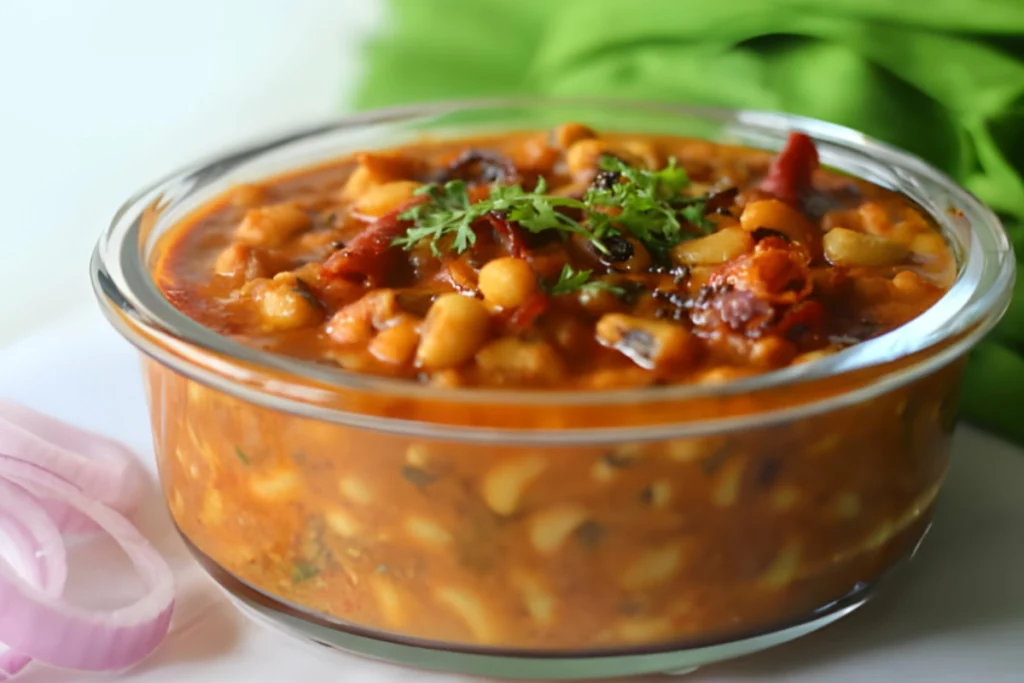Introduction to Black-Eyed Peas
Black-eyed peas, a staple in Southern cuisine and a celebrated ingredient around the world, hold a rich cultural and nutritional significance. Often associated with good luck and prosperity, especially when eaten on New Year’s Day, these legumes are more than just a culinary tradition.
- Historical Background: Originating from West Africa, black-eyed peas were introduced to the American South in the early 18th century. They quickly became a key component in Southern cooking.
- Nutritional Value: Packed with protein, fiber, and essential vitamins, black-eyed peas are not only delicious but also highly beneficial for health.
Incorporating black-eyed peas into your diet can be a delightful experience, especially when prepared with care and creativity.
This introduction sets the stage for an in-depth exploration of black-eyed peas, from their cultural roots to their versatile role in modern cuisine. For those looking to explore more, consider pairing them with Easy Chicken Salad Chick Broccoli Salad for a nutritious meal.
To Soak or Not to Soak?
The question of whether to soak black-eyed peas before cooking is a topic of much debate among cooks and food enthusiasts. This process, often seen as a crucial step in preparing these legumes, has both its advocates and detractors.
- Pros of Soaking:
- Reduces Cooking Time: Soaking black-eyed peas can significantly shorten their cooking duration.
- Improves Digestibility: It’s believed that soaking helps in reducing certain indigestible sugars that cause gas.
- Cons of Soaking:
- Time-Consuming: The traditional overnight soaking method requires foresight and can be inconvenient.
- Nutrient Loss: Some argue that soaking might lead to a loss of water-soluble nutrients.
For those who prefer the no-soak method, modern cooking appliances like the Instant Pot have made it easier to cook black-eyed peas without prior soaking, retaining both flavor and nutrients. However, for traditionalists, the soaking process remains a non-negotiable step, believed to enhance the overall texture and taste of the peas.
In conclusion, the decision to soak black-eyed peas largely depends on personal preference, cooking method, and time constraints. Whether soaked or not, these legumes remain a versatile and nutritious addition to any meal, pairing well with dishes like Southern Style Instant Pot Collard Greens for a wholesome and satisfying experience.
Methods of Preparing Black-Eyed Peas
Preparing black-eyed peas can be done in various ways, each method catering to different preferences and time constraints. Understanding these methods is key to achieving the perfect texture and flavor in your dishes.
- Soaking Overnight:
- Traditional Approach: This method involves soaking the peas in water for at least 8 hours or overnight.
- Benefits: It reduces cooking time and is believed to improve digestibility.
- Quick Soak Method:
- Faster Alternative: For those short on time, the quick soak method involves boiling the peas for a few minutes and then letting them sit in hot water for an hour.
- This method is a compromise between the no-soak and overnight soaking methods, offering a quicker way to soften the peas without losing too much time.
- No Soak Method:
- Convenience: Ideal for busy cooks, this method skips soaking altogether.
- Modern Appliances: Using a pressure cooker or an Instant Pot can significantly reduce the cooking time of unsoaked peas, making this method more feasible.
Each of these methods has its merits, and the choice largely depends on individual preferences and the time available for preparation. Whether you opt for the traditional overnight soak, the quick soak, or the convenient no-soak method, black-eyed peas can be a nutritious and flavorful addition to your meals.
Cooking and Recipes
Black Eyed Peas Cooking Tips
Cooking black-eyed peas is an art that can be mastered with the right techniques. Whether you prefer a traditional approach or a modern twist, there are several methods to cook these nutritious legumes to perfection.
- Stovetop Method:
- Classic and Controlled: Cooking black-eyed peas on the stove allows for greater control over the cooking process.
- Simmering: After soaking (if preferred), simmer the peas in water or broth until tender, which usually takes about 1-2 hours.
- Instant Pot and Pressure Cooking:
- Time-Efficient: For those seeking a quicker method, pressure cooking, especially using an Instant Pot, significantly reduces the cooking time.
- No Soak Required: One of the biggest advantages of using an Instant Pot is that soaking is optional, making it a convenient choice for busy cooks.
- Slow Cooker Method:
- Set and Forget: The slow cooker offers a hassle-free approach, ideal for those who prefer to prepare their meals in advance.
- Long Cooking Time: This method involves cooking the peas on a low setting for several hours, allowing the flavors to develop deeply.
Each of these cooking techniques has its unique benefits, and the choice depends on your cooking style, time availability, and flavor preferences. While the stovetop method offers a traditional touch, the Instant Pot and slow cooker provide convenience without compromising on taste. No matter the method, black-eyed peas can be a versatile and nutritious addition to your culinary repertoire. For a deeper dive into the most delicious and creative ways to enjoy these legumes, check out our detailed guide on What is the Best Way to Eat Black-Eyed Peas?. This guide will inspire you with new ideas and recipes, ensuring that your black-eyed pea dishes are always flavorful and exciting.


